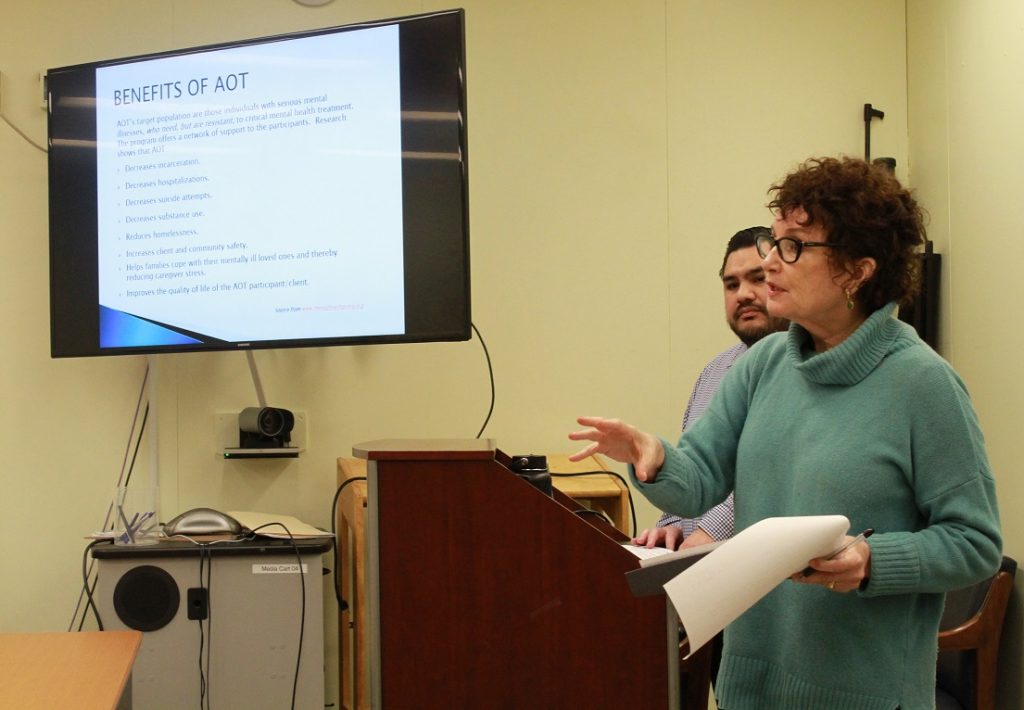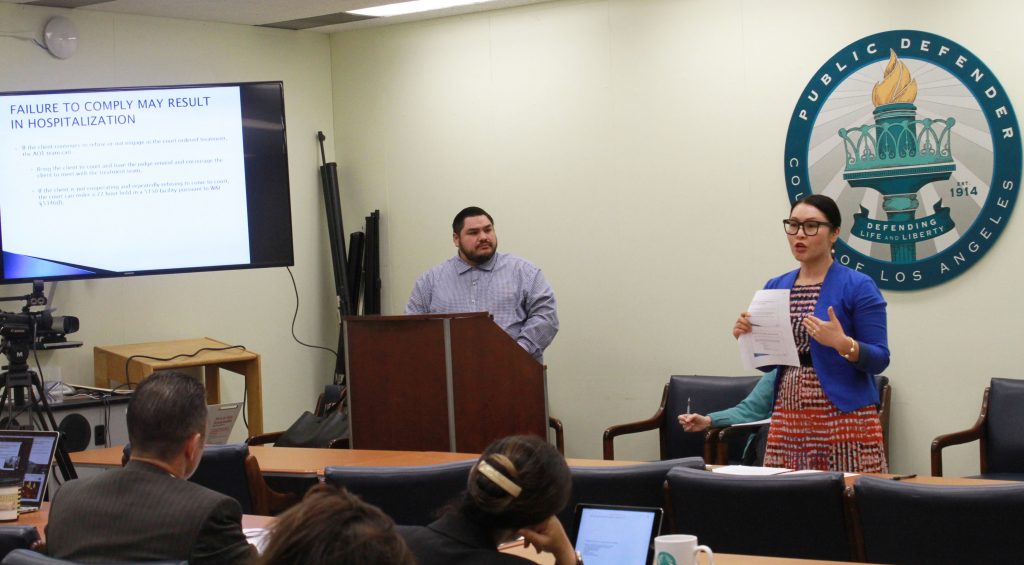23 Apr Let’s Break the Cycle

Homeless people living in tents near downtown LA at night.
Young, ambitious and smart, 23-year-old Frederick* wanted to earn a degree in business and pursue a career in the music industry. But he had three giant hurdles: He was diagnosed with schizophrenia, he had Crohn’s disease and was self-medicating with an overuse of cannabis.
Frederick had been in an Assisted Outpatient Treatment (AOT) program, implemented through the LA County Department of Mental Health. But he wasn’t engaging in treatment when he was arrested for breaking into a car and stealing a laptop, a felony.
LA County Deputy Public Defender Clarisse Hamblin of the Mental Health Unit, who works with AOT-LA clients, spoke with Frederick’s deputy public defender. They were able to persuade the court to have Frederick participate in AOT for an additional year in lieu of jail time.

Deputy Public Defender Clarisse Hamblin and social worker Chris Lee of the Mental Health Unit conduct training on AOT.
“So in his second year of AOT he was taking his meds, meeting with his clinician and going to school,” said Chris Lee, the social worker who assists Hamblin with AOT clients. “After a year he graduated from the AOT program, the court dismissed the case and he finished school at LA Trade Tech. And he was able to go home.”
On April 17 at the Clara Shortridge Foltz Criminal Justice Center, Hamblin, Lee and Social Worker Supervisor Suzie Oh were on hand to train deputy public defenders and paralegals on the benefits of AOT to clients such as Frederick.
The AOT program provides monitored outpatient mental health treatment to people who need but will not accept mental health treatment. Also known as Laura’s Law, the 2002 statute gives counties an option to opt in or out of AOT. In 2015, LA County opted in.
The purpose of AOT is to identify people with serious mental illness and a history of treatment noncompliance, assess them and pursued them to volunteer for the services. If needed, mandated participation through a court order can be sought.
“You know the people you see living in tents on the streets of LA?” Hamblin asked. “Those are our clients. And we go out and see them in their tents because they are so ill and used drugs for so long it becomes almost impossible to get them treatment. This is one way of doing it in the kindest, gentlest way possible. Albeit court monitored and ordered.”
During the training, Oh, Hamblin and Lee explained why having an AOT client or planning to advise on an AOT referral can be useful to the mitigation of a case.

Social Worker Supervisor Suzie Oh and Lee conduct training on AOT.
“When a client goes through the AOT process, there’s a lot of history that DMH is able to gather,” Oh said. “They must collect four-years-worth of information on this individual. You should be able to get that information. You should be able to get past psychiatric hospitalization records, and what kind of treatment they might have received while incarcerated.”
Other information gathered is any past treatment providers, whether client’s psychiatric health was deteriorating, whether the client was homeless or had a history with law enforcement.
“Your client’s involvement in AOT can help your mitigation because you have a lot of mental health history gathered,” echoed Hamblin. “It can help in a disposition like our client Chris described. It can help in diversion. Under the diversion statute, AOT is listed as an alternative.
“It can help in cases that are recidivistic in nature; people who are accused of the same crimes over and over again. It can help break that cycle and move them out of the criminal justice system.”
Many referrals for AOT come from the LA City Attorney’s Office, which seeks to get its recidivistic clients into the program.
“In this we have commonality,” Hamblin said. “We have commonality with the police and we have commonality with the prosecutors in this small area where we’re all trying to help one individual break a cycle.”
*Name has been changed to protect client confidentiality.

